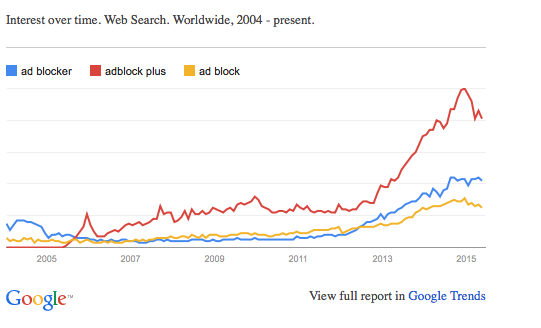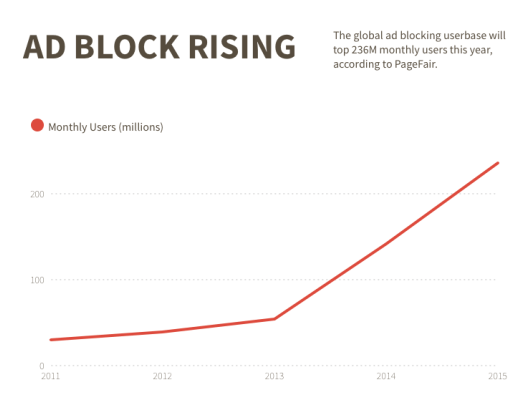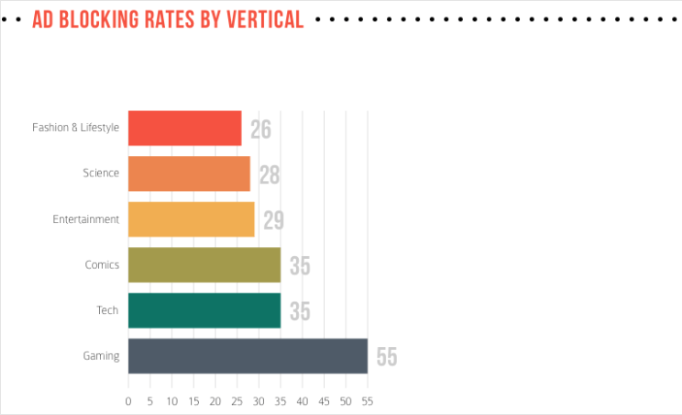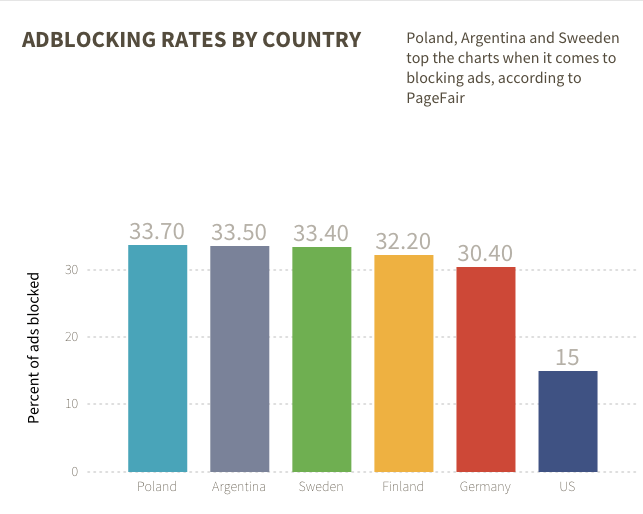Sometimes users just don’t want to look at ads. Having to sit through a 30-second promo to get to a favorite show or removing a full-page banner to check a favorite web page can be annoying to some —and, as a result, they’ve turned to ad-blocking services to help alleviate the problem.
DigiDay recently posted a number of charts that indicate just how popular ad-blocking services have become, and while they’re a saving grace for users, they’re a thorn in the side of companies trying to meet their advertising bottom lines.

This chart, generated by Google, shows just how much usage of ad blockers have increased over the past ten years. They were minimally used in 2005, but these days, searches under the names “ad blocker”, “adblock plus” and “ad block” are used quite extensively. AdBlock plus seems to get the most traffic, but the other two have shown an increase in interest as well.

AdBlock has also seen more results in its searches as well. The chart above indicates that the service, which is used consistently to stop pop-ups and other obtrusions from getting in the way of browsing sessions, will top 236 million monthly users, according to a report from PageFair. This is a large climb from 144 million last year, and 21 million back in 2010. The AdBlock Plus service generates an average of 2.3 million downloads a week, starting back from 2013.

As far as which sites are most affected by ad blocking, gaming has the number one spot with 55 percent, followed by tech and comics at 35 percent, and entertainment, science and fashion and lifestyle rounding out the list just below 30 percent each. These numbers, reported by Secret Media, are generated based upon certain audiences. Gaming sites, for instance, have young, male and tech-literate visitors that use ad-blocking services regularly.

One would think that the United States would be the biggest nation to use ad-blocking services, but this chart indicates that other countries use them regularly as well. Poland leads the pack with 33.7 percent of all ads blocked, followed by Argentina (33.5 percent), Sweden (33.4 percent), Finland (32.2 percent) and Germany (30.4 percent). The U.S. is on the list, but its usage sits at a lowly 15 percent.
“I personally suspect that in some of these countries, citizens are more concerned about their personal privacy, perhaps for historical reasons,” said PageFair CEO Sean Blanchfield.
While blocking services do make things more convenient for the user, it creates a new challenge for companies to overcome with creation of an effective ad campaign. The bottom line is that they’ll just have to keep trying — pop-up ads just aren’t doing it anymore.

